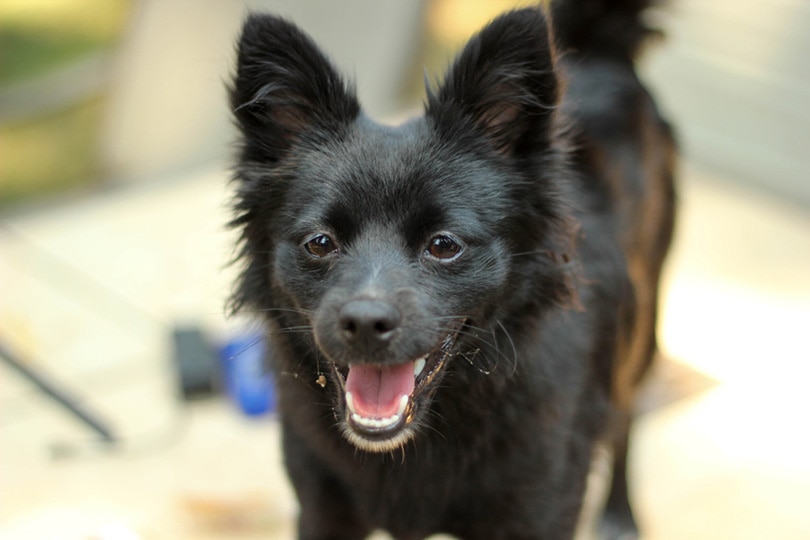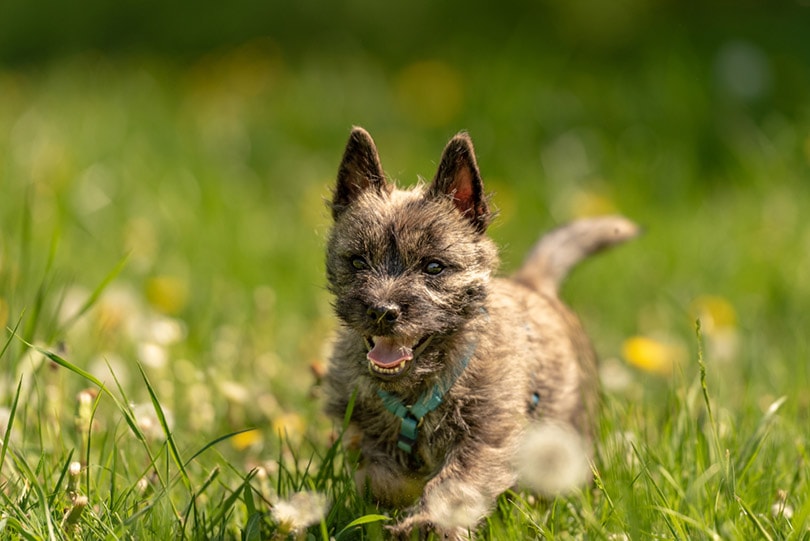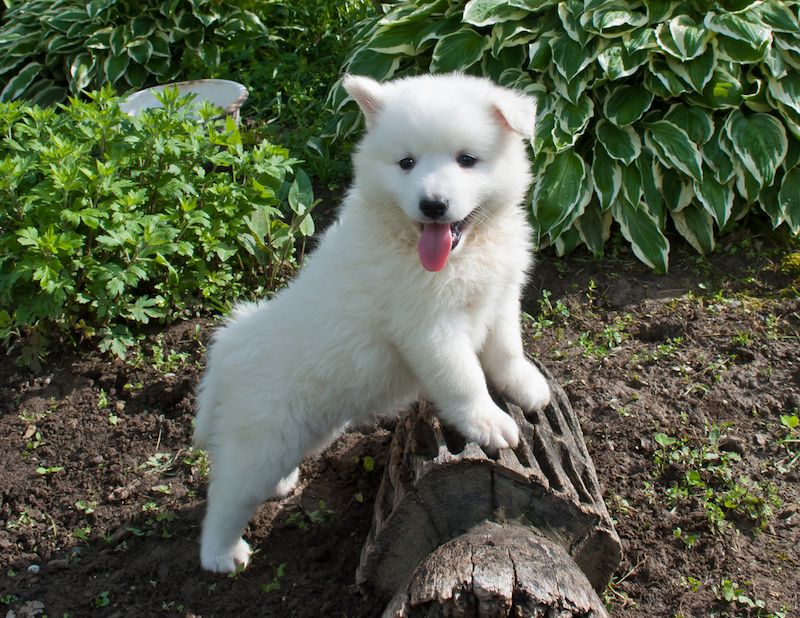If your puppy is breathing fast, you may wonder if it is normal or something to worry about. In many situations, rapid breathing is a normal response. Puppies pant to thermoregulate and when they experience heightened emotions like excitement or stress. However, there are certain situations where rapid breathing is triggered by an underlying illness, such as heart disease or respiratory disease. Conditions causing pain or anemia can also cause a puppy to breathe rapidly. In these situations, fast breathing is a sign that something is wrong and that your puppy needs to be seen by a vet.
As a dog owner, it’s important to be able to differentiate between what’s normal and what’s not in order to keep your puppy safe. Let’s get all the details on this particular issue.

What Is a Puppy’s Normal Respiratory Rate?

In order to spot an abnormal respiratory rate, it’s important to first know what normal is. When a puppy is resting, their breathing should be smooth and unlabored, with a respiratory rate between 15 and 35 breaths per minute.
Anything higher than this is classified as fast. The medical term for fast breathing is “tachypnoea.”
How to Determine Your Puppy’s Respiration Rate
Watch your puppy’s chest as it moves in and out. One breath is counted when the chest moves in and out once. Use a watch or timer to count the number of breaths your puppy takes in 30 seconds, and multiply this number by two. This will give you your puppy’s respiratory rate.
Now that you know the normal respiratory rate of your puppy and how to determine it, let’s explore seven of the most common reasons for an elevated respiratory rate and how to identify them.
The 7 Reasons for an Elevated Respiratory Rate
1. Thermoregulation

Puppies pant to cool down after exercise or in hot weather. Unlike people, dogs do not regulate their body temperature by sweating, as they only have a relatively small number of sweat glands in their footpads. Instead, dogs and puppies cool down by panting. When a dog pants, moisture evaporates from the tongue, nose, and lungs. This has a cooling effect on the body.
Most puppies should stop panting after a few minutes once they have cooled down. If the panting persists, it’s possible that your puppy is suffering from heatstroke. Other signs of heatstroke include vomiting, hypersalivation, collapse, and seizures. If you suspect that your puppy is suffering from heatstroke, move them to a cool area as soon as possible, and seek urgent veterinary attention, as heatstroke is a medical emergency.
Brachycephalic puppies are particularly at risk for developing heat stroke even in mildly elevated temperatures. “Brachy” means shortened and “cephalic” means head, so the word brachycephalic quite literally means “shortened head.” The skulls of these flat-faced breeds are shortened in length compared to dogs with regularly shaped heads. This gives the face and nose a flattened appearance and alters the surrounding soft tissue structures. As a result, brachycephalic dogs and puppies are not able to cool down efficiently from panting.
Keep your puppy safe by having them stay out of the sun during the hottest times of the day and making sure there is always plenty of fresh drinking water available.
2. Excitement
Puppies breathe fast when they are excited. It is normal for a puppy to pant from excitement during playtime and when meeting new people and animals. Panting from excitement is generally accompanied by other physical signs that a puppy is happy, such as relaxed body posture, a wagging tail, and relaxed ears that are not flattened against the head. Excited puppies may also vocalize and make those cute noises we enjoy so much.
3. Stress or Anxiety

If your puppy is breathing rapidly, it could be due to stress or anxiety. Puppies can become stressed by a variety of things, ranging from loud noises to new situations.
Other signs of stress and anxiety to look out for other than panting include a low or tucked tail, trembling, hunched body posture, flattened ears, and hiding away. If possible, try to remove your puppy from the situation that is causing them to become stressed or fearful. If your puppy is getting stressed or fearful in situations that should normally not cause a negative response, speak to your veterinarian. These negative reactions could get worse over time and turn into phobias if left untreated.
4. Respiratory Disease
The respiratory system is made up of the upper respiratory and lower respiratory tract. The upper respiratory tract includes the nose, nasal cavity, sinuses, pharynx, and larynx, while the lower respiratory tract includes the trachea, bronchi, and lungs. Disease in any part of this system can cause a puppy to breathe rapidly. A puppy’s breathing may also be labored or noisy depending on the part of the respiratory tract affected and the severity of the disease.
Puppies are at risk for developing respiratory infections compared to healthy adult animals, as their immune systems are not fully developed and not yet efficient at fighting infection. This makes it easier for infectious organisms to enter and spread in a puppy’s respiratory system. Fortunately, many of the most common and potentially life-threatening infections that puppies are at risk of contracting are preventable with vaccination. You can help protect your puppy by making sure they receive all their puppy vaccinations at the correct times.
In addition to a rapid respiratory rate, other signs of respiratory disease to look out for include a discharge from the nose, coughing, low energy levels, loss of appetite, and fever.
5. Anemia

The cells in the body need oxygen to function normally and to stay alive. Oxygen is carried from the lungs to the tissues in the body by red blood cells. A decrease in the number of circulating red blood cells in the body (also known as anemia) means that there is less oxygen available to the cells. When a puppy is anemic, they will breathe faster to try to compensate. Other common signs of anemia are pale gums, low energy levels, tiring quickly during play, and a fast heart rate.
There are numerous conditions that can cause a puppy to develop anemia. The most common causes of anemia in puppies include:
- Tick-borne diseases, which damage red blood cells
- Heavy infestations of blood-sucking parasites, such as ticks, fleas, and worms
- Toxins, e.g., garlic and onions
Be sure to keep your puppy’s tick-and-flea treatment and deworming up to date to keep them safe. Familiarize yourself with foods to avoid feeding your puppy. Check out this helpful article from the American Society for the Prevention of Cruelty to Animals on foods to avoid feeding your pet.
6. Pain
Although dogs and puppies experience pain in the same way that we do, they often express it differently and may even hide it. A puppy that is in pain may show physical symptoms or behave differently than they usually do. Sometimes it is obvious that a puppy is in pain. A puppy in pain may yelp when they are touched or limp on a sore leg. Other times, the signs of pain can be more subtle, like breathing rapidly, becoming more withdrawn, or adopting a hunched posture.
- Wounds
- Infections, such as skin and ear infections
- Musculoskeletal issues, such as sprains and bone fractures
- Abdominal pain from conditions like intussusception or foreign bodies
7. Heart Disease

An increased respiratory rate in a puppy may be a sign of congenital heart disease. This is a term used to describe abnormalities of the cardiovascular system that are already present at birth.
In addition to rapid breathing, other signs of congenital heart disease include coughing, stunted growth, weakness, accumulation of fluids in the lungs or abdomen, and low energy levels. Signs may vary based on the type of defect present and the severity. Fortunately, congenital heart disease is rare, and only 1% of dogs are affected by this condition.
Most puppies born with congenital heart disease initially don’t show any clinical signs of disease. A heart murmur picked up at a puppy’s first checkup may be the first sign that something is wrong. This is one of the reasons that it is so important for a puppy to have routine checkups. The presence of a murmur in a young puppy doesn’t necessarily indicate a congenital heart defect, though. Some murmurs are “innocent murmurs,” which will usually disappear by 6 months of age.
However, if the veterinarian suspects that there is a more serious issue, they will want to run further tests, such as a chest X-ray or echocardiogram, to check for congenital heart disease. Certain defects can be corrected with surgery, which is best performed before the puppy goes into congestive heart failure or develops irreversible heart damage.
When to Worry About a Puppy Breathing Fast
Panting from heat, excitement, or stress is normal and usually short-lived. A puppy that is panting from heat should breathe normally within a couple of minutes once they have cooled down. But a persistently high respiratory rate on a hot day or after exercise could mean that a puppy is having a heatstroke and needs urgent veterinary attention.
When a puppy’s breathing is persistently fast and can’t be explained by things like heat, excitement, or stress, it can be a sign of an underlying disease. Rapid breathing accompanied by other clinical signs, such as low energy, a reduced or absent appetite, coughing, nasal discharge, or fever, is also indicative of a problem. In these cases, it is best to take your puppy to the vet.
See also:
- Why Is My Dog Coughing Like Something Is Stuck in His Throat? Our Vet Answers
- How Old Is a Puppy When Their Balls Drop? Our Vet Explains
- Why Does My Dog Breathe Fast While Sleeping: Our Vet Explains
Featured Image Credit: JStaley401, Shutterstock












